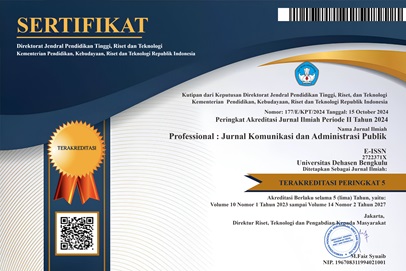Komunikasi sebagai Instrumen Kepemimpinan: Analisis Komparatif Dinamika Internal HIMAKSI dan HIMAPLIK
Abstract
I Communication within student organizations does not merely serve as a means of conveying information, but also represents the leadership style applied within the organization. This study aims to analyze and compare the communication styles that have developed within the Communication Science Student Association (HIMAKSI) and the Public Administration Student Association (HIMAPLIK) at Dehasen University in Bengkulu, as well as to examine how these communication styles reflect the leadership patterns of each organization. The approach used is descriptive qualitative with data collection techniques in the form of in-depth interviews with the chairpersons, executives, members, and advisors of both organizations. The results of the study indicate that HIMAPLIK adopts an open, participatory, and professional communication style, consistent with democratic leadership and a communication structure that runs vertically and horizontally in a balanced manner. Conversely, HIMAKSI exhibits a tendency toward inconsistent and one-way communication, reflecting a semi-authoritarian leadership model. These findings were analyzed using organizational communication theory (Goldhaber), communication style theory (Norton), and leadership style theory (Lewin). Based on these results, it is concluded that the effectiveness of student organizations is highly determined by the extent to which internal communication is built in a dialogic, open, and inclusive manner, supported by leadership that is adaptive to organizational dynamics.
Downloads
Copyright (c) 2025 Tuti Handayani Is

This work is licensed under a Creative Commons Attribution-ShareAlike 4.0 International License.





